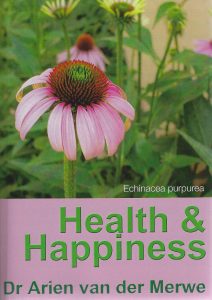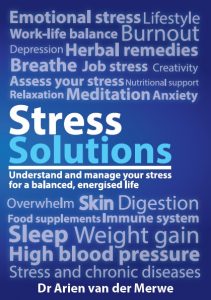Two main types of cannabinoid receptors
CB1: found mostly in the brain and nervous system – mediating many of cannabis psycho-active effects.
CB2: found in most of the body, and especially immune system.
The diverse biological effects, from therapeutic to psycho-active, is a result of all the cannabinoids’ activation of various receptors on our cell membranes.
The illustration below, with the light green dots showing CB1 and the dark green ones the CB2 receptors, being present throughout the body, in every cell, shows why cannabis is such a powerful medicine for an incredibly large number of conditions because it directly influences an ancient and all-encompassing system in our body, our own ECS.

Cannabis strains
Cannabis indica binds mostly to CB2 receptors: body (inflammation, immunity), calming, pain, sleep, gut, where it stimulates serotonin production for a calming, feel-good effect that enhances digestion and absorption of nutrients.
Cannabis sativa binds mostly to CB1 receptors: brain and nervous system to enhance focus, clarity, concentration, creativity.
Indica-Sativa blend: best of both worlds where mind-brain-body cause of disease is addressed for inner balance (homeostasis)
Raw cannabis contains no THC, which is only produced when cannabis is heated.
When cannabis is consumed raw, THCA (tetrahydrocannabinolic acid) with much milder psycho-activity is available. THCA relieves pain and muscle spasms.
Raw cannabis contains the CBD, and has many nutritional benefits (e.g. omega-3 and -6 essential fatty acids, essential amino acids, antioxidants, anti-inflammatories, etc.).

Cannabis sativa bred for high THC content is called cannabis or marijuana. Cannabis sativa bred for industrial purposes (textiles, paper, rope, clothing, oils, topical skin ointments, etc) is called hemp.
Hemp contains CBD with 0.3-1.5% THC, while marijuana contains from 5-10% THC, even up to 24-30% THC
| Official scientific research:
malfunctioning or imbalanced ECS is connected to many physiological issues, demonstrating why cannabis is a valid, successful treatment for so many conditions, disorders, diseases, such as: Anxiety, Depression, Insomnia ADHD Pain and inflammation Cancer Fibromyalgia Arthritis Diabetes Hypertension Age related decline. Alzheimers. Dementia. PTSD Concussions Epilepsy Amyotrophic lateral sclerosis (ALS) Multiple sclerosis (MS) Asthma Lupus Autism Glaucoma Parkinson’s Disease (PD) Crohn’s Disease |
How to take medicinal cannabis
CBD oil supplements can be used orally as drops or infusion. Place under tongue (sublingually), hold there for around a minute before swallowing to allow the drops to be diffused through the mucous membranes where there are many capillaries to absorb the active ingredients directly into the bloodstream to work faster and more effectively.
CBD capsules can be taken if you can’t stand the taste of CBD. Higher dosages are required because less CBD may enter the bloodstream due to the effect of stomach acid and the delay through the digestive system.
How much?
This is a tough one, as there are no hard and fast rules when it comes to cannabis. Ideally, the dosage should be prescribed by a qualified and experienced health practitioner. Various brands have products offering different strengths. Different conditions require different dosages to be effective.
Typically, one should start with the recommended dosage for a week and build up weekly in small increments (micro dosing) until no further benefit is felt. Then gradually reducing the dosage until you find an ideal dosage for the desired effect.
Therefore, the recommended dosage is not a simple matter, but dependant on the specific condition and the individual’s own metabolism.
CBD oil is legal in SA. Since September 2018, cannabis oil itself can be used from growing your own plants in your own garden. In most countries it’s the psycho-active THC that makes cannabis illegal.
Other food/herbs rich in cannabinoids that bind to our ECS receptors
Black pepper has important anti-inflammatory properties, and contains the terpenes that give some cannabis strains the familiar black pepper taste.
Dark chocolate: pure chocolate (made with raw cacao) affects anandamide levels in two ways. It increases the number of available endocannabinoid receptors and it slows down the enzyme that breaks anandamide down.
Black truffles: have anandamide in them, and when eaten they directly increase the levels of this endocannabinoid in our bodies.
Kaempferol: a compound found in many fruits and vegetables like apples, grapes, onions, potatoes, tomatoes and broccoli. Besides being a powerful antioxidant and reducing oxidative stress, kaempferol also inhibits the breakdown of anandamide, thus prolonging its effects.
Rosemary, Maca, flax seeds
Echinacea purpurea & angustifolia – mimics the effects of cannabis by acting on the CB2 receptor specifically regulating the immune system and inflammation
Helichrysum umbraculigerum (daisy from SA used as mood lifter, for depression and as anti-inflammatory), Radula marginata (liver wort), Acmella oleracea (electric daisy)
In conclusion
Even though the number of scientific studies that deal with medical cannabis, the endocannabinoid system and cannabinoids from cannabis are published in more than 24 000 different articles, many people are still uncertain about the healing properties of this plant.
Taking our health into our own hands by learning about health enhancing remedies from nature’s own pharmacy, is something I consider a personal responsibility to teach my patients, especially when the medicine in question is something completely natural and has existed on this planet long before humans did.
Small and carefully calibrated dosages (called micro dosing) encourage our bodies to produce more of its endogenous cannabinoids like anandamide and 2-AG, and at the same time increase the concentration of cannabinoid receptors CB1 and CB2.
This is very valuable to people whose endocannabinoid system is not functioning properly, but more importantly it demonstrates that cannabinoids from cannabis aren’t just a simple cure—they are a tool that helps our body increase the production of its own internal health regulators.
Besides THC and CBD, each strain of cannabis has a vast number of accompanying compounds that add to the synergistic effect of cannabis as a whole plant, called the entourage effect. More about this in a future article. In the meantime, support your own endocannabinoid production: eat or drink some dark chocolate!
Written by Dr Arien van der Merwe, natural, integrative medical doctor, author, specialist holistic health and wellness counsellor and stress management consultant, workplace wellness service provider and author. Arien is a regular guest on TV and radio and contributes to many magazines and journals.









